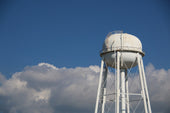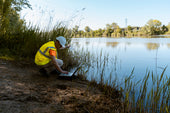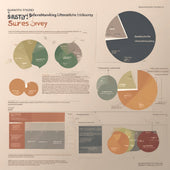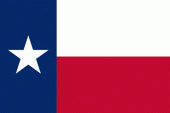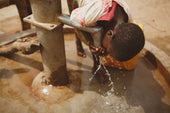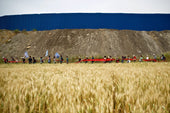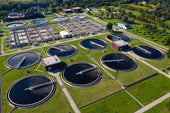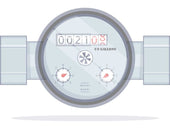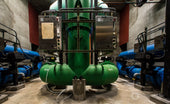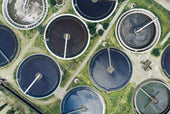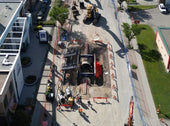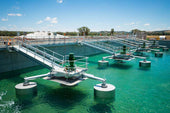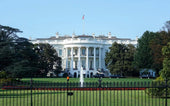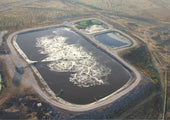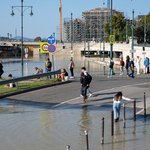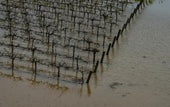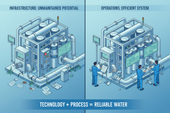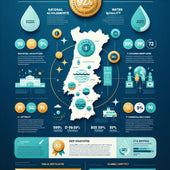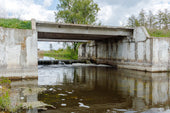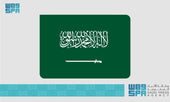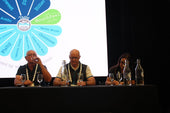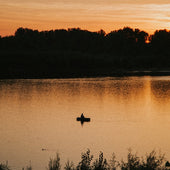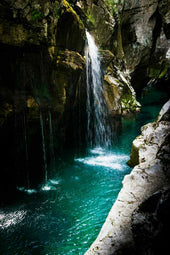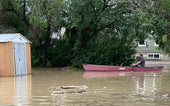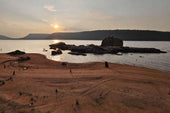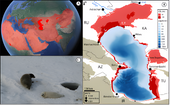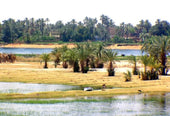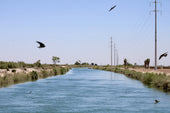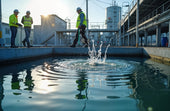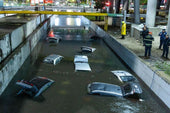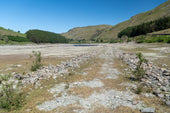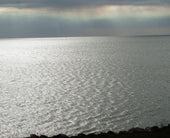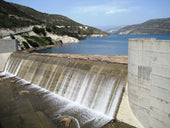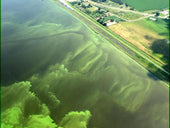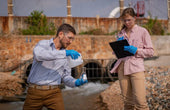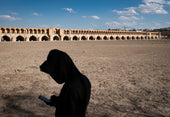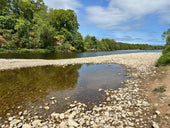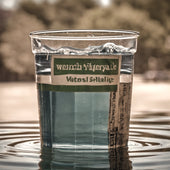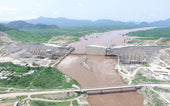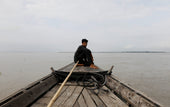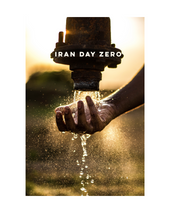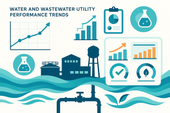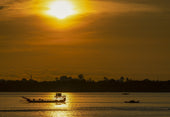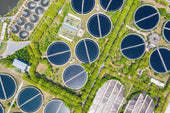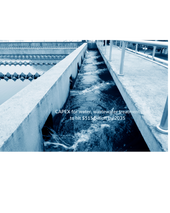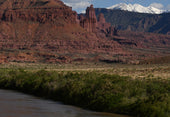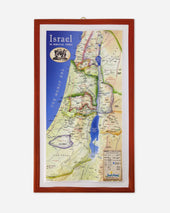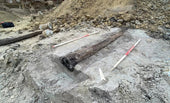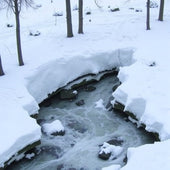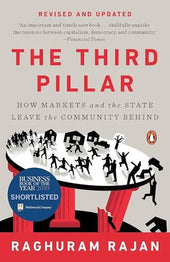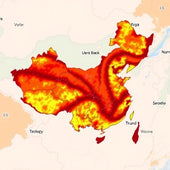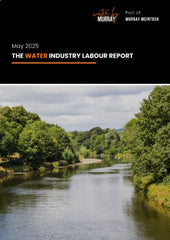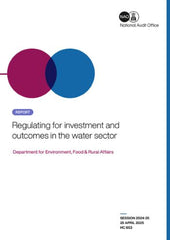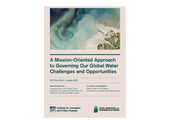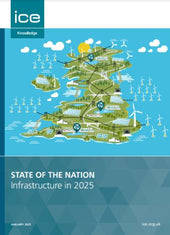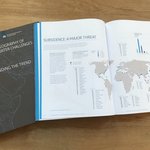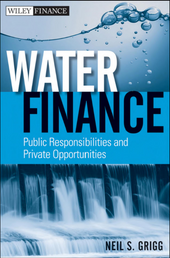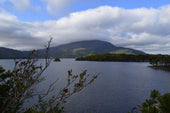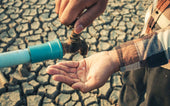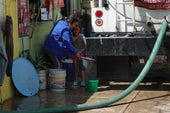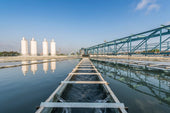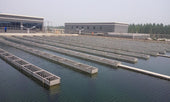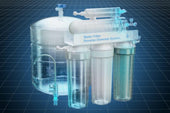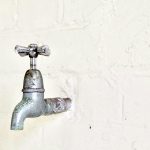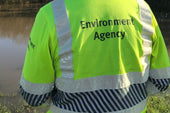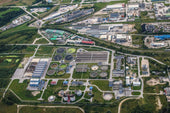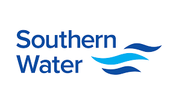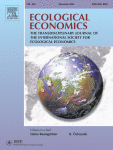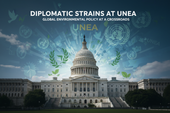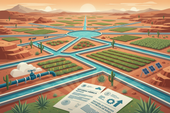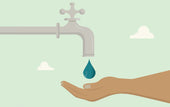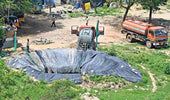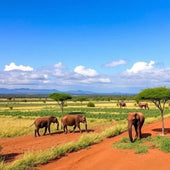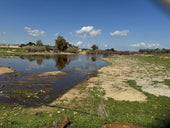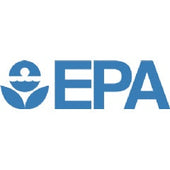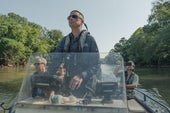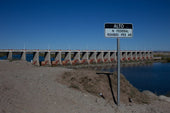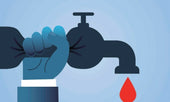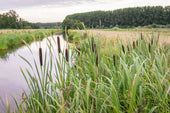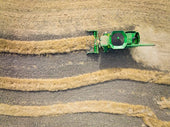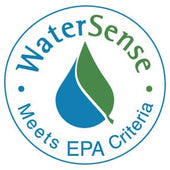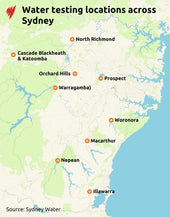
Water Mismanagement in Agriculture: a Case Study of Greece. Starting with “how” and "why"

The Water Paradox: How Greece's Most Water-Rich Region Faces Agricultural Drought
A deep dive into the irrigation challenges plaguing the fertile plains of Arta, Greece
The Contradiction That Defies Logic
Imagine living in one of the wettest regions of your country, surrounded by rivers and blessed with the highest annual precipitation rates, yet struggling to find enough water for your crops. This isn't a hypothetical scenario—it's the daily reality for farmers in the Arta plain of northwestern Greece.
The Arta plain, historically known as the "orchard of Epirus," presents a fascinating paradox that challenges our assumptions about water scarcity. Despite being located in one of Greece's most water-abundant areas, this fertile agricultural region is experiencing severe water shortages that threaten both crop yields and the livelihoods of local farmers.
A Tale of Two Water Sources
Recent research by Pappa et al. (2024) reveals the shocking extent of this water mismanagement crisis. Their comprehensive study found that while the region's collective irrigation network receives over 130 cubic hectometers (hm³) of water annually—far exceeding the calculated crop requirements of 49.1 hm³—a staggering 41.1% of irrigation needs are still met through groundwater extraction via private boreholes.
The Numbers Tell the Story
The four dominant crops in the region paint a clear picture of groundwater dependency:
- Kiwifruit: 86% of irrigation from boreholes
- Citrus fruits: 58% from boreholes
- Alfalfa: 15% from boreholes
- Olive trees: 7% from boreholes
These percentages reveal a troubling trend: the most water-intensive and economically valuable crops are almost entirely dependent on unsustainable groundwater extraction.
The Root of the Problem: A 60-Year-Old Infrastructure Crisis
The collective irrigation network, established in the 1960s, consists of 55 kilometers of open earthen channels and 18 kilometers of concrete pipes. This aging infrastructure suffers from massive inefficiencies:
- Water losses of 30-60% during transport due to evaporation, runoff, and deep percolation
- Seasonal limitations: The network operates only from April to September
- Geographic inequalities: Remote areas like Neochori and Pachykalamos receive insufficient water
- Pricing structure problems: Fixed charges per hectare regardless of consumption encourage waste
The Environmental Toll
The consequences of this mismanagement extend far beyond individual farms. The study identifies several alarming trends:
Groundwater Depletion
- Uncontrolled borehole drilling, many unregistered
- Signs of saltwater intrusion in southern areas near the Amvrakikos Gulf
- Energy-intensive pumping operations increasing agricultural costs
Ecosystem Impact
The Arta plain borders the Amvrakikos Gulf, a protected wetland under both the Ramsar Convention and Natura 2000 network. Poor irrigation practices, including the use of drainage water for irrigation and improper disposal of agricultural waste, threaten this critical ecosystem.
A Region in Decline
The agricultural sector's struggles are reflected in broader demographic trends. The region has experienced a 6% population decline over the past decade (2011-2021), with many agricultural fields abandoned due to:
- Lack of labor
- Management issues with irrigation systems
- Declining crop yields
- Economic pressures on small-scale farmers
The Methodology Behind the Discovery
The research team employed an innovative approach to quantify water usage in the absence of comprehensive data:
- CROPWAT 8.0 modeling to calculate precise crop water requirements
- Spatial analysis dividing the region into nine municipal units
- Qualitative surveys with both stakeholders and farmers to estimate groundwater usage patterns
- Historical data analysis from water intake measurements (2016-2018)
This multi-faceted approach revealed that while water supply exceeds demand on paper, poor distribution and management create artificial scarcity.
Lessons for Sustainable Agriculture
The Arta plain case study offers valuable insights for agricultural regions worldwide:
Infrastructure Investment is Critical
Aging irrigation systems can negate natural water abundance. The 60-year-old earthen channels in Arta demonstrate how infrastructure neglect can create water scarcity in water-rich regions.
Pricing Mechanisms Matter
Fixed-rate billing encourages waste. Usage-based pricing could dramatically improve water efficiency and reduce groundwater dependency.
Stakeholder Engagement is Essential
The study found that farmers provided more reliable data than institutional stakeholders, highlighting the importance of ground-level engagement in water management planning.
The Path Forward
The research suggests several actionable solutions:
Immediate Actions:
- Upgrade irrigation infrastructure to reduce transmission losses
- Implement water metering and usage-based pricing
- Extend network operating seasons to reduce year-round borehole dependence
Long-term Strategies:
- Develop climate-resilient crop planning
- Establish agricultural cooperatives to share resources
- Create integrated water monitoring systems
- Promote environmentally sustainable farming practices
A Global Wake-Up Call
The Arta plain's water paradox serves as a microcosm of global agricultural challenges. As climate change intensifies and food security becomes increasingly critical, the efficient management of water resources cannot be left to chance.
The study's findings demonstrate that water abundance doesn't guarantee water security. Without proper infrastructure, management systems, and stakeholder coordination, even the most water-rich regions can face agricultural drought.
For policymakers, farmers, and water managers worldwide, the message is clear: sustainable agriculture requires more than natural resources—it demands intelligent, integrated water management systems that can adapt to both environmental challenges and economic realities.
The fate of the "orchard of Epirus" hangs in the balance, but with proper intervention, it could once again become a model of sustainable agricultural prosperity rather than a cautionary tale of resource mismanagement.
This analysis is based on research published in the Al-Qadisiyah Journal For Agriculture Sciences, highlighting the urgent need for comprehensive water management reform in agricultural regions worldwide.
Bibliography
Pappa, D., Kallioras, A., & Kaliampakos, D. (2024). Water Mismanagement in Agriculture: a Case Study of Greece. Starting with "how" and "why". Al-Qadisiyah Journal For Agriculture Sciences (QJAS), 14(1), 90-106. https://doi.org/10.33794/qjas.2024.149833.1175
Allen, R., Pereira, L., Raes, D., & Smith, M. (1998). FAO Irrigation and drainage paper No. 56. Food and Agriculture Organization of the United Nations, 56, 26–40.
Eurostat. (2019). GDP per capita in 281 EU regions Regional GDP per capita ranged from 31% to 626% of the EU average in 2017. Retrieved from https://ec.europa.eu/eurostat/documents/2995521/9618249/1-26022019-AP-EN.pdf
Eurostat. (2021). More than a fifth of the EU population are aged 65 or over. Retrieved from https://ec.europa.eu/eurostat/en/web/products-eurostat-news/-/ddn-20210316-1
EL.STAT. (Hellenic Statistical Authority). (2011). Population and Housing Census. Retrieved from https://www.statistics.gr/documents/20181/1210503/FEK_monimos_rev.pdf
EL.STAT. (Hellenic Statistical Authority). (2021). Population and Housing Census. Retrieved from https://www.statistics.gr/documents/20181/17286366/FEK-2023-Tefxos-B-02802.pdf
Smith, M., & Nations, F. and A. O. of the U. (1992). CROPWAT: A Computer Program for Irrigation Planning and Management. Food & Agriculture Organization.
Tsirogiannis, I., & Triantos, S. (2009). Survey of irrigation practice in Arta and development of web tools for irrigation management. National Conference of the Greek Society of Agricultural Engineers, Thessaloniki, 8–10.
Tsirogiannis, I. L., Karras, G., Tsolis, D., & Barelos, D. (2015). Irrigation and Drainage Scheme of the Plain of Arta – Effects on the Rural Landscape and the Wetlands of Amvrakikos' Natura Area. Agriculture and Agricultural Science Procedia, 4. https://doi.org/10.1016/j.aaspro.2015.03.004
UNEP (United Nations Environment Programme). (2007). Our Planet: agriculture and economic development. Retrieved from https://wedocs.unep.org/20.500.11822/7470
Viana, C. M., Freire, D., Abrantes, P., Rocha, J., & Pereira, P. (2022). Agricultural land systems importance for supporting food security and sustainable development goals: A systematic review. Science of The Total Environment, 806, 150718. https://doi.org/10.1016/j.scitotenv.2021.150718


